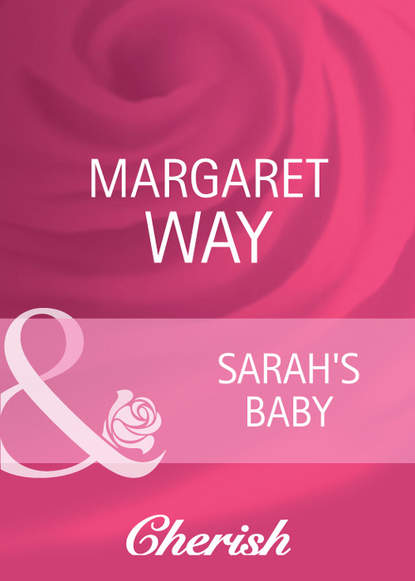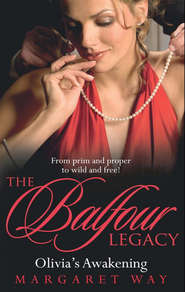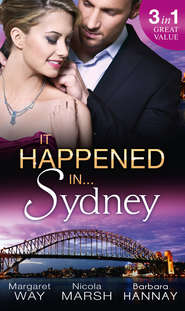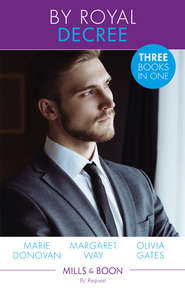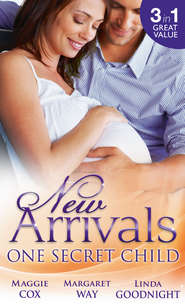По всем вопросам обращайтесь на: info@litportal.ru
(©) 2003-2024.
✖
Sarah's Baby
Автор
Год написания книги
2018
Настройки чтения
Размер шрифта
Высота строк
Поля
The town is located more than one thousand miles northwest of the state capital of Brisbane. It continues to serve this important sheep- and cattle-raising region as a vital transportation point.
Koomera Crossing has a mayor, a rich woman and handsome, with her thick shock of hair cut like a man’s. Enid Reardon, born McQueen. Enid is a forceful, energetic, out-spoken woman who’s spent her life trying to live up to her mother, the matriarch Ruth, but will never make it. Enid, for instance, has never done an unthinkable thing. Ruth has.
The McQueens are one of the oldest pioneering families in this vast area, and they all but own the town. The town geographically comes under the heading of the Channel Country. This is an extraordinary part of the world—riverine desert, quintessential outback. Deeper into the southwest pocket, even more remote, is the home of the country’s cattle kings, with their giant sprawling stations that carry the nation’s great herds.
The Channel Country is immense. Seemingly without end. There, one cannot escape the untamability of the land or fight its powerful allure. To the Aborigines, the Channel Country is a region of magic and mystery rich in Dreamtime legend, many parts of it capable of inspiring fear. The area covers at least one-fifth of the state and is more than twice the size of Texas. The name—Channel Country—refers to the great complex network of braided, interconnecting water channels, billabongs, lagoons and creeks, through which the Three-Great-River system, the Diamantina, Georgina and Cooper’s Creek, make their way to what remains of that fabled lake of prehistory, Lake Eyre. Known as Katitanda to the Arabana, Tirari and Kujani desert tribes who won’t go near it. The lake fills rarely, to the wonderment of man, beast and bird. Only twice in the twentieth century, in 1950 and 1974. Its surface, all four thousand square miles of it, is mostly covered by a glittering pinky-white “polar” salt crust, some fifteen feet deep. It’s as incongruous as the pack ice it resembles in the red heart of the desert.
Ruth McQueen, already halfway to being a law unto herself, saw the lake fill in 1950 when, as a young woman, she and her husband, Ewan, took a joyride over it in their private plane. Ewan was destined to die in a plane crash years later, when his Cessna came down in very turbulent conditions just outside Alice Springs in the Red Centre. Flying is a tricky business in the outback. The air is so hot there’s little or no feeling of buoyancy, of riding the air currents. It’s almost as if an aircraft could suddenly plunge like a meteorite out of the cloudless cobalt sky.
This was the fate of the much-loved, much-respected Ewan McQueen, leaving the devastated Ruth alone with two children, Stewart and Enid, to rear. But Ruth is a great survivor. As soon as she could cope with her grief, she took over the reins, running the family’s historic sheep station with all the energy and skill her husband had. A task nothing short of heroic, but Ruth employs something Ewan had never used: a ruthless hand forever poised in the air, ready to slam someone down. This has earned her many enemies. Something else Ewan McQueen never had.
So the McQueens are held in love and hate. They are the most powerful and influential family in the Northwest, their historic run, Wunnamurra, named after the fiercely predatory eagle hawks that patrol the desert skies. The founder of their dynasty, Dougray McQueen, a Scot who had traveled the world, noticed these birds of prey when he first made camp on the site of his future homestead. This was in the mid-1800s. A man of great strength, McQueen flourished in the harsh, remote environment, so different from anything he’d ever known or ever seen on his travels. It all but defied logic that he chose to build his life there.
His first bride, Fiona, a cousin and a young woman of breathtaking beauty, was brought out from Scotland to Dougray’s immense pride and joy. Fiona lost her reason within a year of arrival. The heat as good as killed her. The isolation! The primitive, overwhelming landscape! The strange indigenous people with their glistening black skin and incomprehensible language. The terrible taste of creek water. The food. The millions of strange birds with their strange names—kookaburras?—their brilliant plumage, their strident cackles and mournful calls. The deprivations a gently reared young woman was forced to endure. It was all too much to bear. Fiona, in a distressed state of mind and in the absence of her husband, wandered off into the bush and disappeared without a trace, despite a huge search that employed the most skilled trackers on earth, the Aboriginals. A number of people over the years claimed to have seen Fiona wandering the lignum swamps, her long, curly red hair hanging unkempt and tangled down her back, face pale and strained, glittery, staring eyes. She wears a long flower-sprigged dress, the hemline dripping moss and mud. The claimants were not fanciful people, either, but iron-nerved family and tough stockmen already familiar with the eerie nature of the Australian bush and its foreboding moods.
Dougray remarried a short time later. He wanted sons. Another Scottish girl, Eleanor, not nearly so bonny, but full of fight. This one had the advantage of an adventurous nature. From that point on, with Eleanor willing and able to take over domestic affairs while producing six children (two dying in infancy), Wunnamurra prospered. It rose to a position of great wealth and prestige as Australia emerged as the greatest producer and exporter of wool in the world. Getting rich off the sheep’s back, as the saying goes. Even before wool sales went into a decline, the McQueens diversified, raising cattle as well, growing wheat on their newly acquired properties in the rich highlands of the central Darling Downs, investing in oil and mineral exploration in a state with fabulous resources and tremendous potential for development.
So the McQueens remain big contributors to the state’s economy. Their fortune, presided over by Ruth, is substantial. The family always figures in the 200 Wealthiest list. Enid, the mayor, is democracy in an iron glove. Her CEO, her husband, Max, has been reduced to a peripheral figure after all these years with two dominant women. Max’s own family were once wealthy landowners, but a series of financial downturns and the loss of two sons in the Second World War took their toll. Max and Enid have two offspring—the vivid, commanding Kyall, the heir, and his younger sister, Christine. Unable to thrive under her mother’s domination and declared disappointments in her, Christine has fled to Sydney to find her own identity and make her own life.
There are other families in the town who make their presence felt. The Logans, the Hatfields and the Saunderses, all represented on the shire council and serving variously as town consulting engineer, finance manager, building inspector and the like. Then there’s the town lawyer, dentist, pharmacist, mechanical engineer and the owner of the local pub, Mick Donovan, good-hearted, with a short-tempered wife who’s never quiet. There are also the lone police constable (his city-born wife left him, screaming she couldn’t stay another moment), town trucker, the plumber, the postie, the baker and the hairdresser. There’s the artist Carol Lu, who could make a fortune with her beautiful landscapes if she so wished but clearly doesn’t, and the mysterious and exotic Maya Kurby. Kurby isn’t her real name. Her real surname is impossible to pronounce, let alone spell. Maya runs the truly excellent ballet school. Then there’s the near-blind violinist, Alex Matheson, who had a nervous breakdown when he was forced to abandon a brilliant career and now conducts the town’s orchestra guild. A man of mystery is Evan Thompson, who arrived in town a year or so previously. Evan can fashion anything from wood, but it’s obvious to everyone that at some stage of his life Evan Thompson was “someone,” not just a gifted woodworker. Evan is a big man, with a dark, brooding presence. Of course, the women of the town are attracted to his good looks and smoldering dark eyes, but he acts as though he’s had enough of women to last him all his life. Charlotte Harris (Lottie to everyone) is an extraordinary dressmaker who could find a job behind the scenes at a Paris fashion house.
Another important character in the town is the authoritative and highly respected Harriet Crompton, a spinster and the town’s lone teacher for the past forty years. Harriet teaches the children and grandchildren of all the local families until they go away to boarding schools to complete their secondary-school education. Harriet is no ordinary woman but a woman of considerable culture (she founded the town’s theatrical society) and fine, upstanding values. She has almost as much impact on the town as Ruth, of whom she has been highly critical from time to time; such is Harriet’s standing in the town that Ruth has never been able to have her removed.
The families of the outlying stations served by the town, like the Claydons of Marjimba, have their role, too, although these stations, like Wunnamurra, are mostly self-sufficient, dealing with their own problems and their own affairs. Great technological advances have made station life a lot easier, telecommunications and modern media opening a door onto the world. All these families are admirable people, but an underlying “cold war” with the McQueens has been going on for decades. Ruth McQueen has earned a reputation for being absolutely ruthless in business, even when dealing with so-called friends. She is indeed a tyrant and her words are set in stone. Even her family, with the notable exception of Kyall, fear to cross her.
The McQueens are therefore loved and hated for a variety of reasons. Ruth is genuinely hated and perhaps should be. She has done things she had no right to do and all of Ruth’s “crimes” are not known. Her grandson, Kyall, on the other hand, is universally admired. He is a splendid figure, striking of looks, clever, egalitarian, resourceful, innovative, with such charisma he appeals to everyone, men and women alike.
The McQueens are the pulse of the town, their money the town’s lifeblood. It was Ruth McQueen who fought to get a hospital established in the town. McQueen money funded its construction and outfitting. The town has long boasted a resident doctor, a good one, Joe Randall. He’s been there from the beginning, handpicked by Ruth (rumour spread early that he was her lover), but he’s now approaching seventy and must retire. Depending on demand, Dr. Randall has up to six nurses to assist him. Nurses are easier to come by than ambitious young doctors, who can’t be lured into rural and outback practices. Joe Randall can handle most everything in general surgery, but in the event of serious cases, he brings in the Royal Flying Doctor service. The Flying Doctor service, the “mantle of safety” over the outback, was founded in 1928 by Flynn of the Inland, a Presbyterian minister who saw the urgent need for medical treatment for the people of the region. Doctors from various bases fly almost two million miles a year ministering to the far-flung communities.
The Royal Flying Doctor service, like Joe Randall, has the gratitude of the town. Ruth McQueen shows her gratitude through big donations. Ruth isn’t all bad. It’s simply that she always has to have her way. Even if it involves playing God with people’s lives.
For all her ability, Ruth has a strong vein of megalomania. Not so astonishing in a woman who’s had so much power, can lay claim to a fortune, a fine historic sheep station and one of the grandest homesteads in the nation.
Love died for Ruth with her husband. She has never felt close to her children. She’s been far too committed to running the station—or such is her excuse. But love sprang to life again when her grandson Kyall, crying lustily, was put into her arms moments after he was born. The great chunk of ice that entombed her heart for so long suddenly thawed. Love she had locked out for years flooded in.
What does it matter if Ruth brushes aside her only son, Stewart, who stands beside her at the foot of his sister’s bed? Stewart who is destined, bruised and battered, to surrender his heritage rather than submit to a lifetime of endless clashes with his mother, in which he knows he can only come off second-best. As for daughter Enid? Enid will hang in for her son. At Ruth’s insistence, the boy will be known as Kyall Reardon McQueen, an imposition Enid and Max are forced to accept. Kyall is the heir.
In Ruth’s view, it is only fitting that he should carry the dynastic name. Indeed, before the boy is barely three, the “Reardon” is dropped as too much of a mouthful. Ruth has her way. Her grandson is Kyall McQueen—just as she has ordained. Kyall is more or less stuck with it, as this is the name the town, indeed the entire outback, becomes used to.
Ruth has never looked in the direction of Max, her son-in-law. As far as Ruth is concerned, she has “kept” him—although for years and years he’s worked very hard. Max would never have been allowed into the family except for his impeccable background.
At the present time, Ruth is in her seventies. She still holds Wunnamurra in a tight grip, fearing that if she lets go she might die. And perhaps go to hell?
Ruth’s heir, her beloved Kyall, has fulfilled her every hope and dream. She loves him so much he can even move her to tears when she hasn’t shed a tear in all the years she’s been widowed—including when she received news of the death of her son, Stewart, and his wife in a bus crash in Malaysia. They left a young daughter, Suzanne, safe in a Sydney boarding school. Ruth is her guardian.
But Kyall will succeed her. Ruth can die happy. Kyall will marry well. A young woman Ruth approves of from an “exceptional” family. A young woman who can take her place anywhere. Since his early teens, Kyall’s had all the girls, one after the other, falling madly in love with him. Girls from the right side of the tracks.
Only once did Kyall cross into forbidden territory. Ruth never likes to think about that time although the terror of eventual discovery is coiled inside her like a hidden spring. This wasn’t the first time Ruth tampered with other’s lives, but it was the worst. Ruth would like to say she doesn’t fear Judgment Day, but in her heart of hearts she does.
Not that Ruth wouldn’t do it all again. Ruth McQueen is used to disposing of threats, even if they come in the form of a fifteen-year-old girl. Ruth won’t have her beloved grandson’s life ruined. Everything she did, she did for him. Even now she feels no remorse. There are certain laws laid down about who should be admitted into the McQueen family. The Dempseys would never find themselves on the list.
What does it matter that Kyall and Sarah Dempsey grew up together? That they formed a bond Ruth and Enid tried hard to destroy? Tried, but to no avail. For a grown woman to hate a mere child is demeaning. But it happened, and the hatred will continue unabated into the future.
In the end, Sarah Dempsey brought the whole unhappy business to a halt. She got pregnant. Ruth had to work fast to avert a scandal. Sarah’s father presented no problem; Jock Dempsey is dead from a spinal injury sustained on Wunnamurra station, where he was an employee, one of the fastest shearers in the McQueen sheds. After that, Sarah’s mother, Muriel, took on the running of the town’s general store, with twelve-year-old Sarah handling the business side. Sarah is clever. But no match for Ruth. It was up to Ruth, the matriarch, to find a solution.
Sarah was removed from town, weeping bitterly. Her mother, a vulnerable woman, is made to keep quiet. Kyall McQueen is never told. Kyall at sixteen would have given up everything for Sarah. His future, his family. Ruth had to take care of it all. She’d hoped for a miscarriage. Sarah had refused point-blank to agree to an abortion, telling Ruth in a young, ringing voice that nothing and no one could make her get rid of her baby.
So the baby lived.
Ruth knows where she is, one of only three people who do. The fourth has since died of snakebite, although no one knows exactly how the snake, a desert taipan, got into Molly Fairweather’s house.
Ruth to this day can’t bring herself to admit that the child, already the age her mother had been when she’d stolen Kyall’s heart, is her own great-granddaughter. That would take moral courage; Ruth only deals in the physical kind.
Life continues. Nothing goes terribly wrong. Ruth continues making plans, showing a rare smiling face to one India Claydon, who springs from a good gene pool and will make Kyall an excellent wife.
Then one August afternoon around three o’clock, Muriel Dempsey, Sarah’s mother, gives a great cry, calls her daughter’s name and collapses behind the counter in her grocery shop, bringing down on top of her a pile of mail.
In the small space of time it takes for her assistant, the town stickybeak, Ruby Hall, to run for help, Muriel Dempsey dies at fifty-six without ever knowing she has a living, healthy grandchild. Muriel has been robbed of the great joy of knowing her only grandchild. Robbed by a cruel woman whose name is Ruth McQueen.
CHAPTER ONE
Waverly Medical Centre, Brisbane
THE SURGERY HAD BEEN chaotic that morning. Winter flu. The time of year no one looked forward to. The epidemic had hit the city in the wake of the August Royal National Show, a huge crowd-pleaser, with plenty of hot sunshine and flying red dust from the show ring to encourage the germs. The patients, coughing, sneezing, searching for tissues, others with their heads firmly buried in magazines, were either waiting for flu shots—injections of the vaccine, which was an attempt to second-guess what strain of influenza would strike or seeking medication to relieve the distressing symptoms. Antibiotics didn’t work.
Sarah didn’t prescribe them for the flu or a common cold, but she knew she’d always get an argument from some of her patients who thought that only drugs could kill off the virus. These were the days of Be-Your-Own-Doctor, with many a patient discussing his or her diagnosis and suggesting various drugs. Home remedies and bed rest simply wouldn’t do. Small wonder the pharmaceutical companies were becoming enormously rich while bacteria became increasingly resistant to the most frequently prescribed drugs. It was a big problem and it worried her.
Around midday things got worse. Pandemonium broke loose when a three-year-old boy with silky blond hair was brought in suffering severe febrile convulsions.
“Please, please. Where’s Dr. Sarah?” The distraught mother registered her terror, appealing to the packed waiting room in general, tears pouring from her eyes.
“It’s all right, Mrs. Fielding, you’re here now. We’ll take care of you.” The clinic’s head receptionist, Janet Bellamy, a kind, competent woman, closed in on the hysterical mother fast, while her junior, Kerri Gordon, ran for Dr. Dempsey, who had a wonderful rapport with her patients, children in particular. Dr. Sarah was the one everyone wanted to see. Especially the mothers of young children.
By the time Sarah, who’d been preparing to run an electrocardiogram on a male patient with chest pains, rushed into the reception room, the young mother was screaming her fear and desperation. Janet and one of Sarah’s female patients, an ex-nurse, were trying ineffectually to calm the young woman and take the lolling, unconscious child from her arms. Another child, a little girl who’d been sitting quietly with her pregnant mother, was sobbing into her hands at this frightening new experience, while her mother placed a soothing, protective arm around her shaking shoulders.
Sarah remembered this wasn’t the little boy’s first brush with seizures. She had recommended further action at the child’s first presentation, but his mother, Kim, had been fiercely against it, no doubt dreading a worse neurological disorder like epilepsy.
At Sarah’s appearance, Kim Fielding seemed to gather strength. She stopped screaming when Sarah addressed her and immediately surrendered her only child to Sarah’s arms. The frantic look left her eyes and in the examining room she watched calmly as Sarah swiftly administered an anticonvulsant medication. The seizure, however, proved of such severity and duration that Sarah called for an ambulance to take the child to hospital to be admitted for observation. Privately she thought the boy’s high fever was only masking a more serious disorder. She grieved for the mother, and the anxious years ahead, squeezing her hand tightly as the young woman climbed into the ambulance to go with her son. These incidents involving children were deeply heart-wrenching for everyone, doctors and patients alike, but for the sake of her other patients Sarah had to refocus in order to deal with her caseload for the afternoon. It didn’t help knowing she’d have to tell Megan Copeley the results of her mammogram.
Not good.
Megan’s fat-rich, low-fiber diet alone had increased her risk of breast cancer by a factor of six. Despite every warning and every lecture Sarah gave her, she’d been unable to wean herself off it.
“But, Sarah, I can’t go without all the foods I enjoy. Neither can my family. Mealtimes would be so dull. Jeff wouldn’t stand for it. There’s no history of breast cancer in my family, anyway.”
There was now. Sadness crept up behind Sarah’s fixed resolve to maintain a professional detachment. She could picture Megan sitting opposite her in a state of shock. Megan was only a handful of years older than her. Thirty-five, with two beautiful children. Some days Sarah could hardly bear the terrible burden and responsibility of being a doctor—telling patients their fears were confirmed or breaking totally unexpected bad news. There was no way out of telling the truth, of telling patients that life as they knew it was over. It was her job to help them deal with it. She knew she was a good doctor. She knew her patients liked and respected her, but sometimes she wanted to pull a curtain and hide behind it. To weep.
What Sarah didn’t know as she agonized for Megan Copeley and tried to swallow the lump in her throat was that tragedy was about to strike her.





